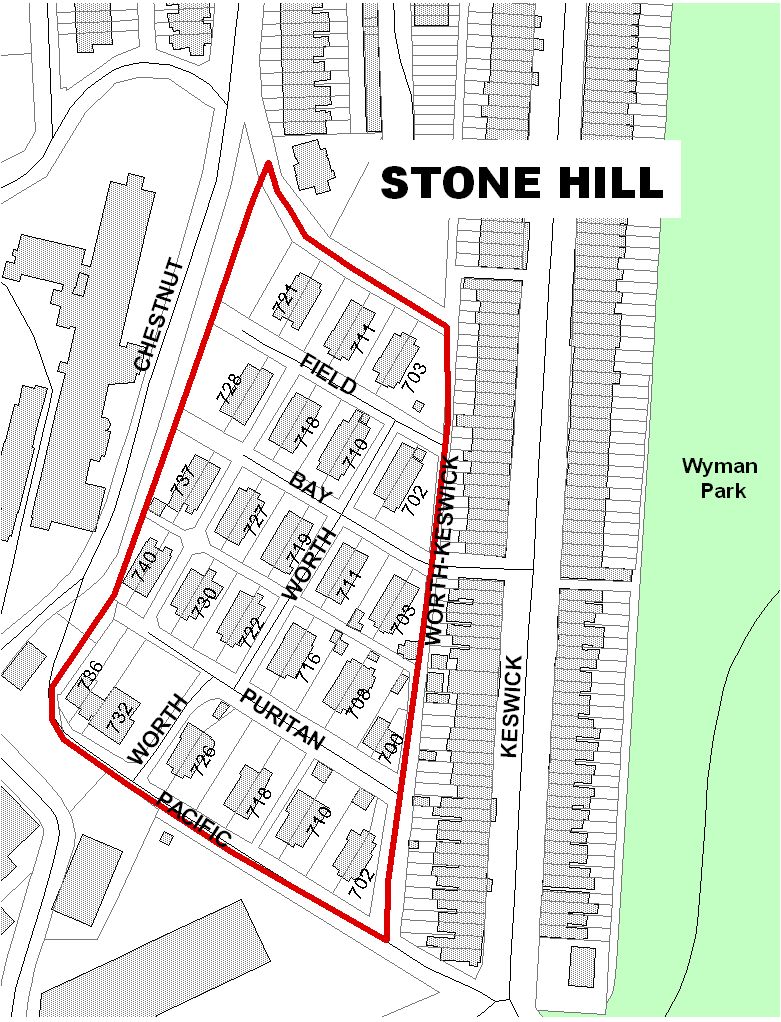Stone Hill
Description
 The Stone Hill Historic District, a complex of workers' housing dating to the mid-19th century, consists of seven gridded blocks overlooking the Jones Falls. Associated with Mount Vernon Mills, the district is comprised of 21 granite duplexes, a granite Superintendent's House, and a granite service building, now converted to a duplex. The unusually cohesive district, unified by its corporate plan, repetition of massing and articulation, and distinctive use of stone construction, meets Criterion C as an excellent example of workers' housing in a textile mill village. The associated landscape created by private streets, lawns, gardens, picket fences, and front porches contributes to the singular character and rural village feeling of this unique historic district.
The Stone Hill Historic District, a complex of workers' housing dating to the mid-19th century, consists of seven gridded blocks overlooking the Jones Falls. Associated with Mount Vernon Mills, the district is comprised of 21 granite duplexes, a granite Superintendent's House, and a granite service building, now converted to a duplex. The unusually cohesive district, unified by its corporate plan, repetition of massing and articulation, and distinctive use of stone construction, meets Criterion C as an excellent example of workers' housing in a textile mill village. The associated landscape created by private streets, lawns, gardens, picket fences, and front porches contributes to the singular character and rural village feeling of this unique historic district.
Significance
Constructed circa 1845-1847, the Stone Hill Historic District is one of the original mill villages along the Jones Falls developed to house textile mill workers. The Stone Hill Historic District meets Criterion A as evidence of changing settlement patterns in the Jones Falls valley beginning in the mid 19th century. The district meets Criterion C because it exemplifies the distinctive characteristics of the Rhode Island-type of textile mill village, significant within the urban environment of Baltimore city, namely housing for families developed adjacent to manufacturing. The period of significance for the district extends from circa 1845, the date of the first houses at Stone Hill, to 1925, the year Mount Vernon-Woodberry Mills began to sell the houses to individual owners.